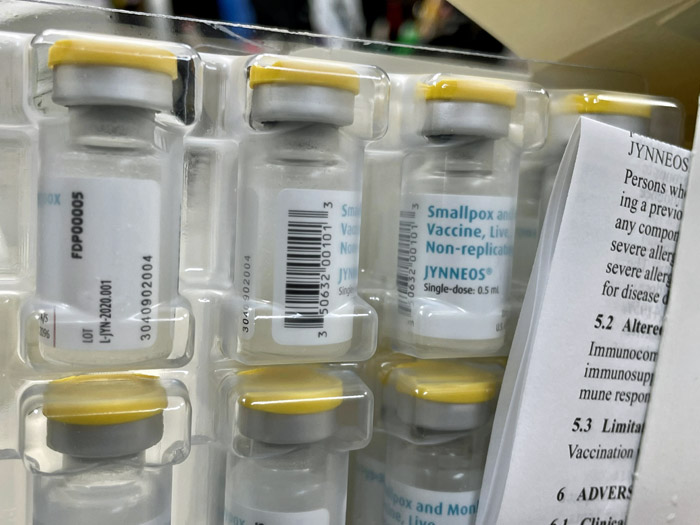Having a chronic disease can feel like a full-time job. There are the symptoms, the flare-ups, the medications and therapies and appointments. And there are tiny adjustments to be made all the time — to a sitting position, a meal, a plan, an expectation.
And, just like in any job, a person’s ability to do the work required of their chronic disease (or, more likely, their two or more chronic conditions) fluctuates. University of Minnesota researcher Nathan Shippee creates tools that can help providers understand and navigate patient complexity. “How we deliver health care can really either make it a little easier for a person to manage things or a little more difficult,” said Shippee, an associate professor of health policy and management at the university’s public health school.
Using a scientific approach, he and his colleagues try to understand the lived experience of patients — and not just in the physical therapist’s suite or the dialysis clinic. STAT spoke with Shippee about his work to capture what’s happening with patients outside the health care system and connect it to their outcomes. This interview has been edited for clarity and brevity.
How do you explain what you do to someone at a dinner party or a stranger in line at the supermarket?
Well, the biggest part of my work is, practically speaking, focused on how we organize and deliver services for people who have physical health, behavioral health — that is, mental or substance use disorders — needs. A lot of times, my work also gets into the area of, “Well, you’ve got those things,” but then on top of that, you often have people who have social factors that also complicate their care. So, really commonly, things like unstable housing and homelessness, for instance. It’s really how we organize and deliver the services.
How did you land on this work?
When my wife and I moved to Minnesota, I started as a fellow at the Mayo Clinic, working with a doctor named Victor Montori, who is really well-known in the area of patient-centered care for people with chronic diseases, especially. And then as I continued working past the fellowship at the Mayo Clinic, this was just an area that I started focusing on.
There’s a topic that we talk about in chronic care called “patient complexity.” And complexity is more than just being complicated; there’s a whole theory around complexity. …So what I and some other scientists have done is really try to say, OK, what if you actually take complexity proper and apply it [to patient care]?
And then you start getting into realizing that actually, patients’ lives are made complex by all kinds of systems around them: their family, their work life, their work history, their lived history, and health care, too. How we deliver health care can really either make it a little easier for a person to manage things or a little more difficult. Health care can be accessible and it can be well-designed or it can be less so. And to the degree that it is less so, that means that even if a person really wants to take care of their health, health care is just adding more uncertainty into that person’s life.
Does it feel frustrating, knowing there are so many overlapping factors that are so much bigger than what you can address in an encounter with a patient?
I’m a Ph.D., so I’ve got the benefit of not actually having to worry about somebody’s life and how I’m helping manage it as if I were a provider. But I do work with a lot of providers. And one of the things that I think is scientifically interesting but also really discouraging is that things don’t always complicate somebody’s life and their care in ways that you would expect from a simple point of view. Some of the things we hear about with people who experience homelessness: they don’t have a place to store their medications.
But if you are using the shelter system, typically, you can’t stay there all day, and so you have hours that you need to fill up and also, you need to handle your meals. If somebody is dealing with chronic diseases, like diabetes, for instance, where diet can make a big difference on how well you’re controlling your diabetes, and at the same time, you have little to no income, it’s really hard to eat well. People who have diabetes who experience homelessness are not stupid. They’ve gotten all the patient education materials, and they know that there’s a lot of things that aren’t great for their diet, so you’re adding stress to that person’s life.
Why have you decided to focus some of your work on chronic disease?
Chronic disease, basically by definition, is something you can’t cure. It doesn’t go away. And that means it can be pretty grueling, quite a slog. …If you think about all the people who have chronic diseases, and I mean the most common chronic diseases, multiple chronic conditions — the largest number of people actually have more than one — and how long people live with those conditions, to me that represents a really big challenge.
What interests you about end-of-life care?
End of life is the culmination of long-standing chronic conditions. There’s been work talking about people living with chronic disease in an “illness career.” This is like retiring from that career. And now we’ve got to say, “Well, right now they’re taking 15 medications, and we think that over the next 2 to 5 years, at most, this person’s probably going to pass away. And so some of these things that we’ve been asking them to do, when can we soften that a little bit?” And that’s a really complicated dance.
And if there’s a way that, as a scientist, I can say, “This is one model that we tested and it seemed to help, in terms of how people experience their care, or how their loved ones felt that the quality of their dying process was better,” then that’s worth doing.
Can you explain to me a little bit about your Cumulative Complexity Model?
It started when I was doing work with colleagues at the time at the University of Minnesota who had some interesting data on people who used different public insurance programs — typically, low-income people in Medicaid and other state programs in Minnesota. …And at the same time, I was looking at what I would call fairly typical Mayo Clinic patients, meaning people who had a lot of health problems, but not necessarily as many of the types of social problems and social service needs that people in those public insurance programs needed.
They’re two really different populations, so what’s the common thread? And I was looking at both of the groups and I realized, if you step back a little bit and go a little bit more abstract, they both face these challenges. The challenge comes from the fact that there is a lot of potential work to do, both in being a patient and also in your life.
On the other hand, there are people who can handle a lot of work and they’re okay, they don’t get stressed out, they’re fine. They don’t fail. They don’t forget. They are able to do it. So there’s some other factor. Everybody has a finite amount of capacity to bring to bear. If work, generally, can be summed up as anything that takes up time, energy or attention, then capacity is anything that affects your readiness, motivation and ability to carry out tasks or to do work.
How does that translate to health care?
A classic example of a breakdown in the balance between work and capacity would be a missed appointment. Now, maybe that’s because you forgot and you don’t have enough redundancies or somebody around you to help remind you; maybe you missed it because you were really, really depressed that day and you just couldn’t get to moving to do much of anything. Or you didn’t take a medication when you were supposed to. There’s a task set for you and, for whatever reason, you didn’t have the readiness, the motivation or the ability to do it.
That reminds me of Christine Miserandino’s “spoon theory,” this concept that people living with chronic illnesses have a set number of “spoons” (energy, ability) per day, and they have to be judicious in how they use them.
I don’t know if [the spoon theory] was around at the time that we did this; it was fairly young. They’re really kind of complementary ideas. It’s funny because for people who know the model, we would even use the language of the model just to say how we’re doing.
One of the things to keep in mind is that there were models or approaches to patient complexity before. And what I wanted to do with this was to make a functional model. So it’s an ongoing thing, which feels more like living — where that interaction between those things then affects how you access and use care and how you carry out your own self-care, and then that in turn is going to affect your outcomes.
We hear so much about how people’s experiences within a health care system vary so much depending on their identities — race, gender, disability, etc. How does that factor into this work? Do complexity models inherently acknowledge intersectionality?
I don’t think it’s ever naturally incorporated. That’s why we always have to be intentional. Back in 1971, a Welsh general practitioner named Julian Tudor Hart came up with this thing that he called the inverse care law, which is that the availability of quality medical care is inversely proportional to the need of the population it serves. So the people who often need care the most have the hardest time getting it. [Cesar Gomes Victora and colleagues] later on came up with the inverse equity hypothesis, and it’s the idea that any new intervention, any new improvement, any new program that we introduce, it’s going to benefit the most privileged first and most.
If you just develop a program and don’t think about that and don’t build that in, I think you’re just going to end up potentially widening the disparities in outcomes, not because you’re hurting anybody, but because you’re actually just benefiting more the people who already are doing pretty well.
This article was supported by a grant from Bloomberg Philanthropies.
Adblock test (Why?)
Researcher studying life's complexities to improve chronic disease care - STAT
Read More








:format(webp)/https://www.thepeterboroughexaminer.com/content/dam/thestar/life/food_wine/2022/08/30/proposed-alcohol-guidelines-highlight-health-risks-with-just-a-few-drinks-per-week/20220830130828-630e48fe4381997f1e2e86a2jpeg.jpg)














